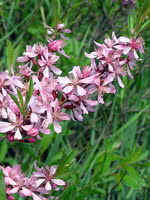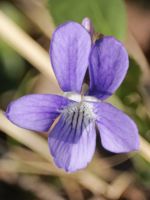Mon-Fri 9am - 5pm Mountain time
Russian Almond vs Early Blue Violet
Prunus tenella
Viola adunca
NOT AVAILABLE THIS SEASON - MIGHT RETURN
Russian Almond is a low maintenance, short, slightly suckering shrub. It is covered with attractive, bright pink flowers in early spring before its foliage emerges.
This hardy species forms dense thickets attracts wildlife. Russian Almond prefers full sun and well-drained soils, but can tolerate moist soils.
The nuts it produces are quite attractive but very small. They are bitter and possibly toxic in large quantities.
Check out our YouTube channel video of the Russian Almond here.
Early Blue Violet is a low-growing native perennial wildflower valued for its striking early-spring blooms. The flowers range in color from vibrant blue to deep violet, often marked with pale highlights and fine white hairs. They provide an important early nectar source for pollinators and serve as a host plant for several fritillary butterfly species.
It spreads by both seed and rhizomes, gradually forming small colonies. Its dark green, heart-shaped leaves add ornamental appeal, and the plant shows some resistance to deer browsing. Early Blue Violet is well-suited to naturalization projects and pollinator-friendly gardens, and has also been used in coastal butterfly habitat restoration in the Pacific Northwest.
Russian Almond Quick Facts
Early Blue Violet Quick Facts
Toxicity: rhizomes, fruit, seed poisonous to humans

